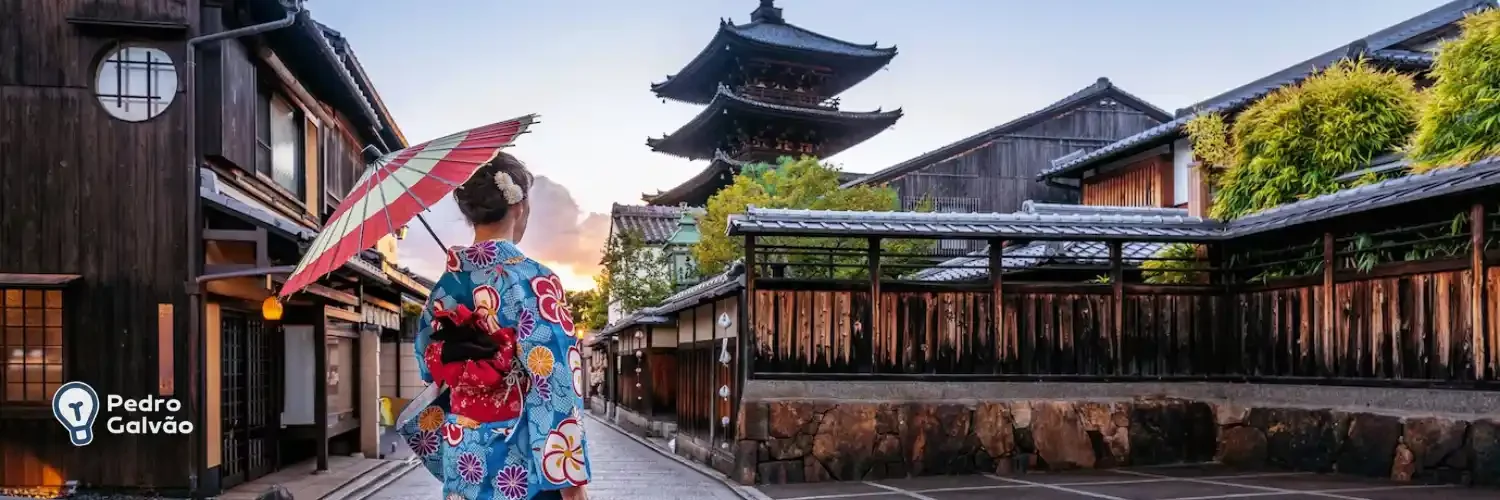Japanese culture is a fascinating mosaic of traditions, values, and customs with deep-rooted origins extending over centuries. In this article, we will unravel the rich cultural tapestry of Japan, exploring its origins, beliefs, practices, and innovations that make it truly unique.
So, if you want to learn Japanese, let’s take a closer look at the peculiarities that make Japanese culture so intriguing to the world, from its cuisine to its forms of artistic expression and unique approaches to daily life.
Origin of Japanese Culture
Japanese culture has millennia-old roots, developed on the islands of Japan and heavily influenced, in large part, by China and other Asian regions. Japan remained relatively isolated from the rest of the world for a long time, which allowed for the preservation of its unique traditions.
However, in the 16th century, Japan opened its doors to international trade, and foreign cultural influence began to play a significant role. After World War II, this influence intensified even more as Japan became more cosmopolitan and globalized.
Key Differences Between Japanese and Western Cultures
Japanese culture markedly differs from Western culture. One of the most noticeable distinctions is the emphasis on harmony and respect in social interactions. The Japanese have a deep sense of respect for others and rules, reflected in their etiquette and daily behavior.
Another notable difference lies in how the Japanese approach physical contact. Unlike Western culture, physical touch is more restricted in Japan and is often considered intimate. The traditional Japanese greeting, known as “ojigi,” involves a respectful bow.
What Japanese Culture Is Like
Japanese culture encompasses a variety of aspects, from cuisine to religion and architecture. Let’s explore some of the most significant areas of Japanese culture.
Cuisine
Japanese cuisine is globally recognized for its diversity and flavor. Dishes like sushi, sashimi, and tempura are enjoyed worldwide. In Japan, food is more than just a meal; it’s an experience that values ingredient quality, visual presentation, and flavor balance.
Traditional dishes include grilled fish, white rice, miso soup, and pickled vegetables.
Music
Traditional Japanese music is unique and involves instruments like flutes, harps, and drums. Japanese music differs from Western music as it’s based on the intervals of human breath rather than beats and tempos.
The taiko, a Japanese drum, is one of the most recognizable instruments and is used in various forms of music and performances.
Education
Education is highly valued in Japanese culture. Japan boasts one of the highest literacy rates globally, and schools encourage students to be responsible and respectful from a young age.
Japanese students take an active role in maintaining the cleanliness of their schools, promoting a sense of responsibility and respect for the environment.
Religion
Religion in Japan is diverse, with influences from Shintoism, Buddhism, and even Christianity. Spirituality in Japan is often viewed as a way of life, with religious rites being more introspective than public preaching.
Respect for nature and the divine is a prominent feature of Japanese religion.
Architecture
Japanese architecture reflects the country’s climate and geography. Houses are designed to allow air circulation, essential in a country with hot and humid summers. Wood is a common building material as it provides warmth in winter and coolness in summer.
Japanese buildings often incorporate elements of nature and have a distinctive style with hat-shaped roofs.
Culinary Habits
Japanese cuisine isn’t limited to lunch or dinner; dishes like sushi are consumed even for breakfast. Rice plays a central role in Japanese cuisine and is used in a wide variety of dishes.
Ingredients such as nori seaweed, raw fish, and vegetables are common, and the food is appreciated for its flavor balance and ingredient quality.
Literature
Japanese literature combines tradition and modernity. Authors like Haruki Murakami incorporate Western elements into their works, creating a unique literary style. The novel “Musashi,” for example, follows the life of a famous samurai in a crisis-ridden Japan, offering a fascinating glimpse into the country’s history.
How Japanese Culture Is Integrated in Brazil
In Brazil, Japanese culture has a significant presence, thanks to Japanese immigration in the early 20th century. Today, the largest Japanese community outside Japan resides in São Paulo, in the Liberdade neighborhood.
Japanese influence can be seen in various aspects of daily life, from cuisine with sushi and sashimi restaurants to the practice of martial arts like judo and karate.
Moreover, Japanese manga and anime have garnered a loyal fan base in Brazil, and Japanese culture is appreciated by many. Through globalization and media, Japanese culture has spread worldwide, allowing people from all around the globe to connect with this rich and diverse culture.






